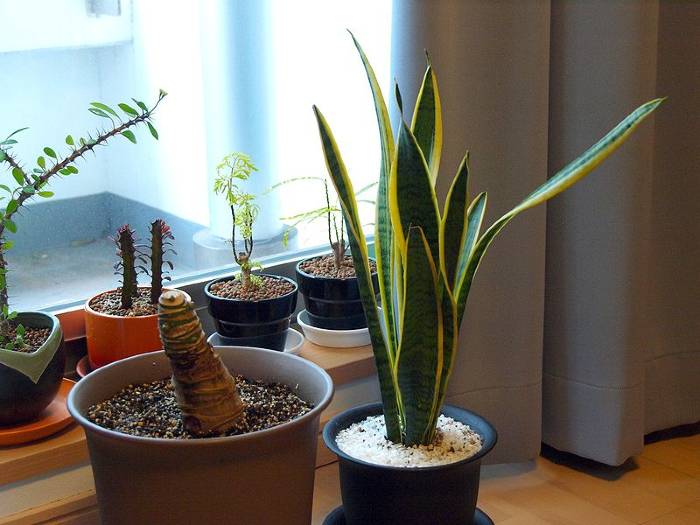30 Air Purifying House Plants According To NASA

Make sure to like Living Green and Frugally on Facebook, Shop at Amazon to help support my site and explore our PINTEREST BOARDS for innovative ways you can become self-sufficient.
Indoor air pollution is a pervasive issue, often underestimated but significantly impacting our health and well-being. The air inside our homes can contain harmful toxins released by everyday items like furniture, carpets, cleaning products, and even electronics. Fortunately, nature offers a solution – houseplants. According to NASA’s Clean Air Study, certain plants have air-purifying qualities, effectively removing toxins and improving air quality. Let’s explore 30 such plants recommended by NASA to create healthier indoor environments.
-
-
-
- Aloe Vera (Aloe barbadensis miller): Known for its soothing gel, Aloe Vera also removes formaldehyde and benzene from the air.
- Spider Plant (Chlorophytum comosum): An easy-to-care-for plant that combats pollutants like formaldehyde and xylene.
- Snake Plant (Sansevieria trifasciata): Also known as Mother-in-Law’s Tongue, it’s excellent at filtering out formaldehyde, benzene, and trichloroethylene.<
View this post on Instagram - Peace Lily (Spathiphyllum spp.): Renowned for its elegant white blooms, Peace Lily effectively removes ammonia, formaldehyde, benzene, and trichloroethylene.
- English Ivy (Hedera helix): A versatile plant that can climb or trail, English Ivy helps combat mold and airborne fecal matter particles.
- Bamboo Palm (Chamaedorea seifrizii): This palm thrives indoors and filters out formaldehyde, benzene, and trichloroethylene.
- Boston Fern (Nephrolepis exaltata): With its lush foliage, Boston Fern is excellent at removing formaldehyde and xylene from indoor air.
- Rubber Plant (Ficus elastica): A popular choice for indoor spaces, Rubber Plant effectively removes formaldehyde.
View this post on Instagram - Chinese Evergreen (Aglaonema spp.): This low-maintenance plant is effective against pollutants like benzene and formaldehyde.
- Devil’s Ivy (Epipremnum aureum): Also known as Golden Pothos, Devil’s Ivy is effective at removing formaldehyde.
- Gerbera Daisy (Gerbera jamesonii): Aside from its vibrant blooms, Gerbera Daisy helps filter out benzene.
- Chrysanthemum (Chrysanthemum morifolium): Known for its colorful flowers, Chrysanthemum effectively removes benzene, formaldehyde, ammonia, and xylene.
- Philodendron (Philodendron spp.): A popular indoor plant, Philodendron helps combat formaldehyde.
- Dracaena (Dracaena spp.): Various species of Dracaena, such as Dracaena marginata and Dracaena fragrans, are effective against benzene, formaldehyde, and trichloroethylene.
- Weeping Fig (Ficus benjamina): Weeping Fig is excellent at removing pollutants like formaldehyde, benzene, and trichloroethylene.
- Flamingo Lily (Anthurium andraeanum): With its vibrant flowers, Flamingo Lily effectively removes formaldehyde, xylene, and ammonia.
-
-
View this post on Instagram
-
-
-
- Pothos (Epipremnum aureum): Pothos is known for its air-purifying abilities, particularly against formaldehyde.
- Dwarf Date Palm (Phoenix roebelenii): This palm species is effective at filtering out formaldehyde, xylene, and toluene.
- Red-Edged Dracaena (Dracaena marginata): A striking plant that combats pollutants like benzene, formaldehyde, and trichloroethylene.
- Barberton Daisy (Gerbera jamesonii): Similar to Gerbera Daisy, Barberton Daisy helps remove benzene from indoor air.
- Elephant Ear Philodendron (Philodendron domesticum): This Philodendron variety effectively removes formaldehyde.
- Bamboo Palm (Chamaedorea seifrizii): Another variety of Bamboo Palm, it’s efficient at filtering formaldehyde, benzene, and trichloroethylene.
- Dwarf Banana (Musa cavendishii): In addition to its tropical charm, Dwarf Banana helps remove formaldehyde.
- Heart Leaf Philodendron (Philodendron hederaceum): This Philodendron species is effective against formaldehyde.
- Janet Craig (Dracaena deremensis): Janet Craig is known for its air-purifying qualities, particularly against trichloroethylene.
-
-
View this post on Instagram
-
-
-
- Lady Palm (Rhapis excelsa): A graceful addition to indoor spaces, Lady Palm is effective at removing formaldehyde, ammonia, and xylene.
- Pot Mum (Chrysanthemum morifolium): Also known as Florist’s Chrysanthemum, Pot Mum helps filter out benzene, formaldehyde, ammonia, and xylene.
- Moth Orchid (Phalaenopsis spp.): Orchids not only add beauty but also remove xylene and toluene from indoor air.
- Sago Palm (Cycas revoluta): Sago Palm is effective against formaldehyde, benzene, and toluene.
- Wax Begonia (Begonia semperflorens): Lastly, Wax Begonia helps remove formaldehyde from indoor air.
-
-
Incorporating these air-purifying houseplants recommended by NASA into your indoor spaces not only enhances aesthetics but also promotes cleaner and healthier air. By harnessing the natural filtration abilities of these plants, you can create a more enjoyable and breathable environment, free from harmful pollutants. So, go ahead, bring a touch of greenery indoors and let nature work its magic for a better living space.